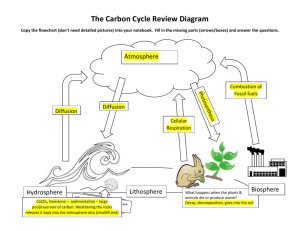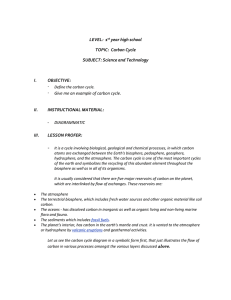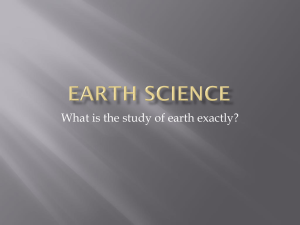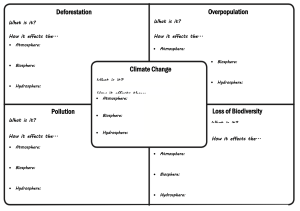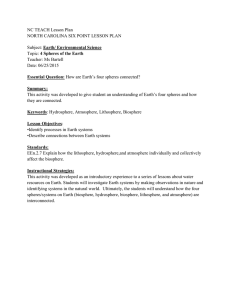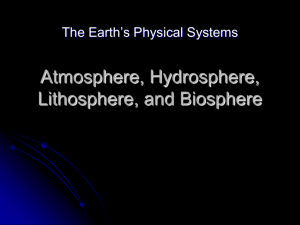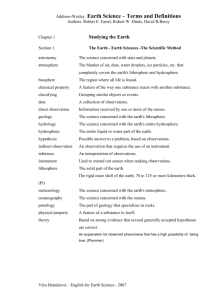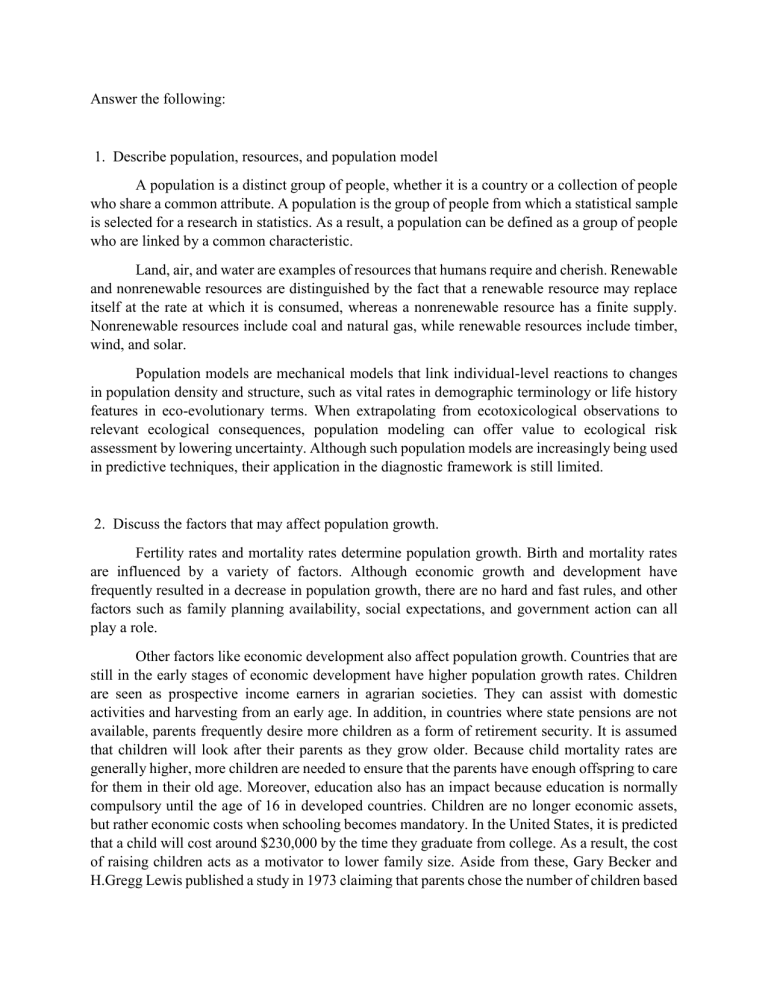
Answer the following: 1. Describe population, resources, and population model A population is a distinct group of people, whether it is a country or a collection of people who share a common attribute. A population is the group of people from which a statistical sample is selected for a research in statistics. As a result, a population can be defined as a group of people who are linked by a common characteristic. Land, air, and water are examples of resources that humans require and cherish. Renewable and nonrenewable resources are distinguished by the fact that a renewable resource may replace itself at the rate at which it is consumed, whereas a nonrenewable resource has a finite supply. Nonrenewable resources include coal and natural gas, while renewable resources include timber, wind, and solar. Population models are mechanical models that link individual-level reactions to changes in population density and structure, such as vital rates in demographic terminology or life history features in eco-evolutionary terms. When extrapolating from ecotoxicological observations to relevant ecological consequences, population modeling can offer value to ecological risk assessment by lowering uncertainty. Although such population models are increasingly being used in predictive techniques, their application in the diagnostic framework is still limited. 2. Discuss the factors that may affect population growth. Fertility rates and mortality rates determine population growth. Birth and mortality rates are influenced by a variety of factors. Although economic growth and development have frequently resulted in a decrease in population growth, there are no hard and fast rules, and other factors such as family planning availability, social expectations, and government action can all play a role. Other factors like economic development also affect population growth. Countries that are still in the early stages of economic development have higher population growth rates. Children are seen as prospective income earners in agrarian societies. They can assist with domestic activities and harvesting from an early age. In addition, in countries where state pensions are not available, parents frequently desire more children as a form of retirement security. It is assumed that children will look after their parents as they grow older. Because child mortality rates are generally higher, more children are needed to ensure that the parents have enough offspring to care for them in their old age. Moreover, education also has an impact because education is normally compulsory until the age of 16 in developed countries. Children are no longer economic assets, but rather economic costs when schooling becomes mandatory. In the United States, it is predicted that a child will cost around $230,000 by the time they graduate from college. As a result, the cost of raising children acts as a motivator to lower family size. Aside from these, Gary Becker and H.Gregg Lewis published a study in 1973 claiming that parents chose the number of children based on a marginal cost and marginal benefit analysis. Parents in industrialized countries with high rates of return on education have an incentive to have fewer children and spend more on their education - to provide their children with not just a standard education, but one that is comparably better than others. Smaller families are required to provide the best start in life for youngsters. Smaller families were often associated with increased real GDP per capita, according to Becker. Moving on, welfare payments also affect population growth because children are seen as 'insurance' to look after their parents in old age, hence family numbers in developing countries are larger. This is no longer necessary in modern society, and as a result, birth rates are declining. Additionally, there are also social and cultural factors which is usually related to having strong social attachments in the family. Next is the availability of family planning. Increased contraception access may enable women to reduce their family size to a more manageable level. Contraception is more difficult to come by in the poor countries, which can lead to unintended pregnancies and faster population growth. Increasing rates would help to keep population growth under control. Also, often, death rates fall before birth rates fall, resulting in a population boom at a specific point in a country's economic progress. Medical treatments improved rapidly throughout the nineteenth and early twentieth centuries, allowing many fatal diseases to be treated. Death rates have decreased, while life expectancy has climbed. The second to the last factor is immigration. Net migration is one of the most important sources of population expansion in some countries. Between 2000 and 2013, net international migration accounted for over half of the net population growth in the United Kingdom. Countries with tight immigration policies, such as Japan, have witnessed population stagnation. Lastly, couples reunited at the end of WWII began having families in the postwar period, resulting in a population 'boom' in western countries. The 'babyboomer' period shows how historical events and a combination of circumstances influenced population growth, causing a delay in having children until the war ended which is why war is also a factor that affects population growth. 3. Make a list of things that you can do to help control the population explosion. The following are the effective ways that I think can help in controlling population growth: 1. Women Empowerment 2. Promotion of Family Planning 3. Sex Education in Schools 4. Government Incentives for responsible parenthood 4. Briefly describe the characteristic features of the four spheres of the earth. The four spheres of the earth are the lithosphere, hydrosphere, biosphere, and atmosphere. Going more into the details, all of the cold, hard solid land of the planet's crust, the semi-solid land beneath the crust, and the liquid land in the planet's center make up the Lithosphere. The lithosphere's surface is quite uneven. There are great mountain ranges, such as the Rockies and the Andes, as well as vast plains and flatlands. The lithosphere's solid, semi-solid, and liquid land form strata that are physically and chemically distinct. These layers, like the layers of an onion, would be revealed if someone pierced through Earth to its core. The lithosphere's outermost layer is made up of loose dirt that is rich in nutrients, oxygen, and silicon. A very thin, solid crust of oxygen and silicon lies beneath that layer. A thick, semi-solid mantle of oxygen, silicon, iron, and magnesium follows next. A liquid outer core of nickel and iron is found beneath it. A solid inner core of nickel and iron lies at the heart of the Earth. The Hydrosphere contains all of the planet's solid, liquid, and gaseous water. It has a thickness of 10 to 20 kilometers. The hydrosphere reaches down several kilometers into the lithosphere and up roughly 12 kilometers into the atmosphere from the Earth's surface. Fresh water makes up a modest percentage of the water in the hydrosphere (non-salty). This water falls to Earth's surface as precipitation from the atmosphere, as rivers and streams along the surface, and as groundwater beneath the surface. Almost all of the water on the planet is salty. The salty water gathers in deep valleys on the surface of the Earth. Oceans are enormous bodies of salty water that have been gathered together. The graphic above displays the various temperatures that can be found on the ocean's surface. The water at the poles is extremely cold, whereas the water towards the equator is extremely hot. Water changes physical states as a result of temperature fluctuations. Water freezes into a solid at extremely cold temperatures, such as those seen at the poles, forming a polar icecap, a glacier, or an iceberg. Water evaporates into a gas at extremely high temperatures, such as those seen near the equator. All of the planet's living things are contained within the Biosphere. This sphere contains all of the Earth's bacteria, plants, and animals. Living beings establish ecological communities in the biosphere based on their physical surroundings. Biomes are the names given to these types of communities. Deserts, grasslands, and tropical rainforests are just a few of the biomes found inside the biosphere. The Atmosphere is made up of all of the air in the Earth's system. It stretches from less than 1 meter below the planet's surface to more than 10,000 kilometers above it. The biosphere's organisms are shielded from the sun's UV radiation by the upper atmosphere. It absorbs and emits heat as well. Weather happens when the air temperature in the lowest portion of this sphere varies. Air in the lower atmosphere flows about the earth as it is heated or cooled. A wind can produce a simple result, or a tornado can produce a complex result. 5. Explain the different factors that contribute to environmental impact affecting human activities. Humans have a variety of effects on the physical environment, including overcrowding, pollution, fossil fuel combustion, and deforestation. Climate change, soil erosion, poor air quality, and undrinkable water have all been induced by changes like these. These negative consequences can have an impact on human behavior, resulting in mass migrations or wars over clean water. Since death rates have reduced, medicine has improved, and industrial agricultural methods have been adopted, overpopulation has become an epidemic, keeping humans alive for much longer and increasing the total population. Overpopulation has a number of negative consequences, the most serious of which being environmental deterioration. Humans require a lot of room, whether for farms or businesses, both of which take up a lot of space. As the population grows, more clearcutting occurs, causing ecosystems to be badly harmed. CO2 levels rise when there aren't enough trees to filter the air, which has the potential to harm every living thing on the planet. Another issue is our reliance on coal and fossil fuels for energy; as the population grows, so will the use of fossil fuels. The burning of fossil fuels (such as oil and coal) releases large amounts of carbon dioxide into the atmosphere, endangering the extinction of thousands of species and compounding the effects of forest loss. Humanity's constant demand for greater space devastates ecosystems and raises CO2 levels, further endangering the fragile environment. Despite the fact that processed resources are required to power cities, the prior evaluation indicates that the world can only take so much damage before it begins to harm humans. Pollution can be found almost anywhere. Pollution and waste are unavoidable, as seen by the rubbish thrown out on the motorway and the millions of metric tons of pollution spewed into the atmosphere each year. Pollution is so terrible that 2.4 billion people still don't have access to safe drinking water. Humanity continues to pollute essential resources such as air, water, and soil, which take millions of years to recover. The air is arguably the most polluted, with the United States alone emitting 147 million metric tons of pollutants per year. Global warming is, without a doubt, the most serious environmental threat. CO2 levels are the most significant factor, ranging from respiration to more harmful causes such as burning fossil fuels and deforestation. In any case, humans are steadily raising CO2 levels over the world—every year. Before 1950, the highest documented level of CO2 was at 300 parts per million. Current CO2 levels, on the other hand, have surpassed 400 PPM, erasing all previous records stretching back 400,000 years. CO2 emissions have contributed to a nearly one-degree increase in the planet's average temperature. Climate change is inextricably linked to the evolution of industry and technology throughout history. The weather patterns on Earth will shift dramatically as global temperatures rise. While some areas will have extended growing seasons, others will become desolate wastelands as massive quantities of water become depleted, transforming once-floral regions into deserts. The rise will have an impact on weather patterns, resulting in larger and more frequent hurricanes, as well as exacerbating and prolonging droughts and hot waves. However, air pollution has consequences that go beyond the environment. Poor air quality and increasing temperatures are destroying sensitive ecosystems, leading to increased asthma and cancer rates in humans, according to mounting data. Genetically modified organisms (GMOs) have played an important role in human survival and prosperity. GMOs are specially grown crops or crops that have had DNA physically implanted into them to offer them a competitive edge, such as the ability to withstand colder conditions, use less water, or yield more product. GMOs, on the other hand, are not always unintentional. For years, humans have used glyphosate, a pesticide designed to kill weeds, which are the most serious threat to any plant. However, just as people have a learning immune system, certain weeds have evolved resistance to 22 of the 25 herbicides currently in use, with 249 kinds of weeds entirely immune, according to the most recent scientific report. In the water, there are 5.25 trillion bits of plastic garbage. Not only is rubbish poured into the oceans, but so is excessive fertilizer that is washed into the ocean by storms, floods, and winds, or dumped in massive quantities directly into the world's largest source of oxygen. Fertilizer contains nitrogen, which is necessary for plant growth, however this does not limit it to its original use. Phytoplankton and algae thrive in nitrogen-rich environments, resulting in "red tides" or "brown tides" in locations where nitrogen levels are high. The brown tide is caused by the rapid growth of billions of algae, which decrease oxygen levels in water bodies and cause poison to build up in all living things that consume it, including fish and birds. Water contamination, however, does not stop there. All these impact the environment and the way human beings live. References Alexander, D. (2020, June 22). 11 Ways Humans Impact the Environment. interesting engineering. https://interestingengineering.com/11-ways-humans-impact-theenvironment D.E. Lee, M.K.L Strauss, in Reference Module in Earth Systems and Environmental Sciences, 2016 Pettinger, T. (2020, Novermber 19). Factors that affect population size and growth. economics. https://www.economicshelp.org/blog/469/development/factors-effect-population-sizeand-growth/ Scott, G. (2021, March 17). Population. investopedia. https://www.investopedia.com/terms/p/population.asp
